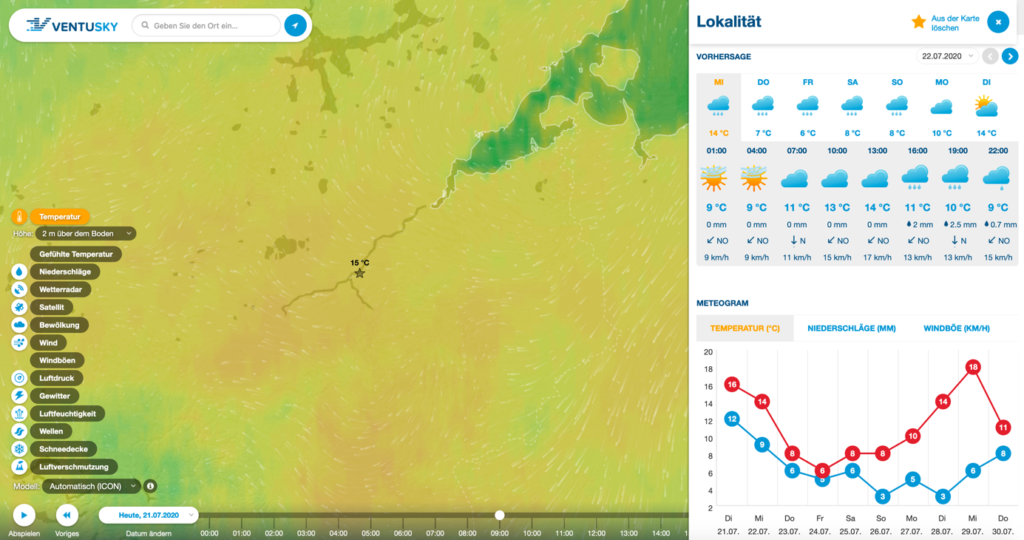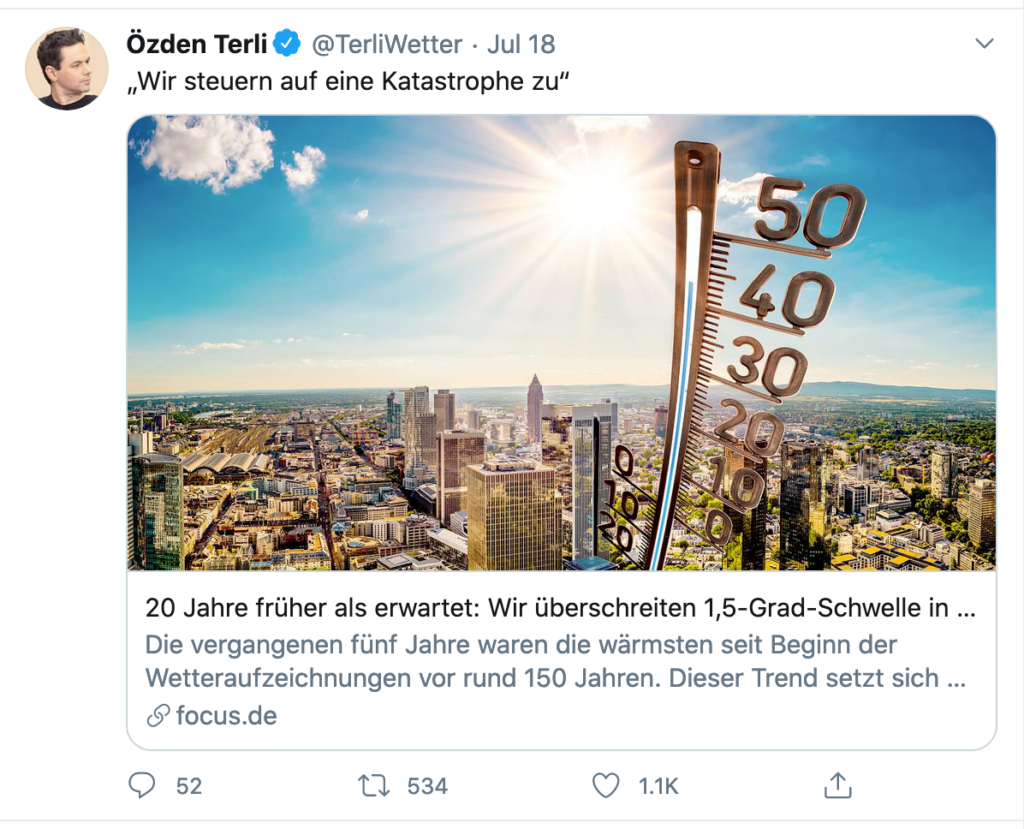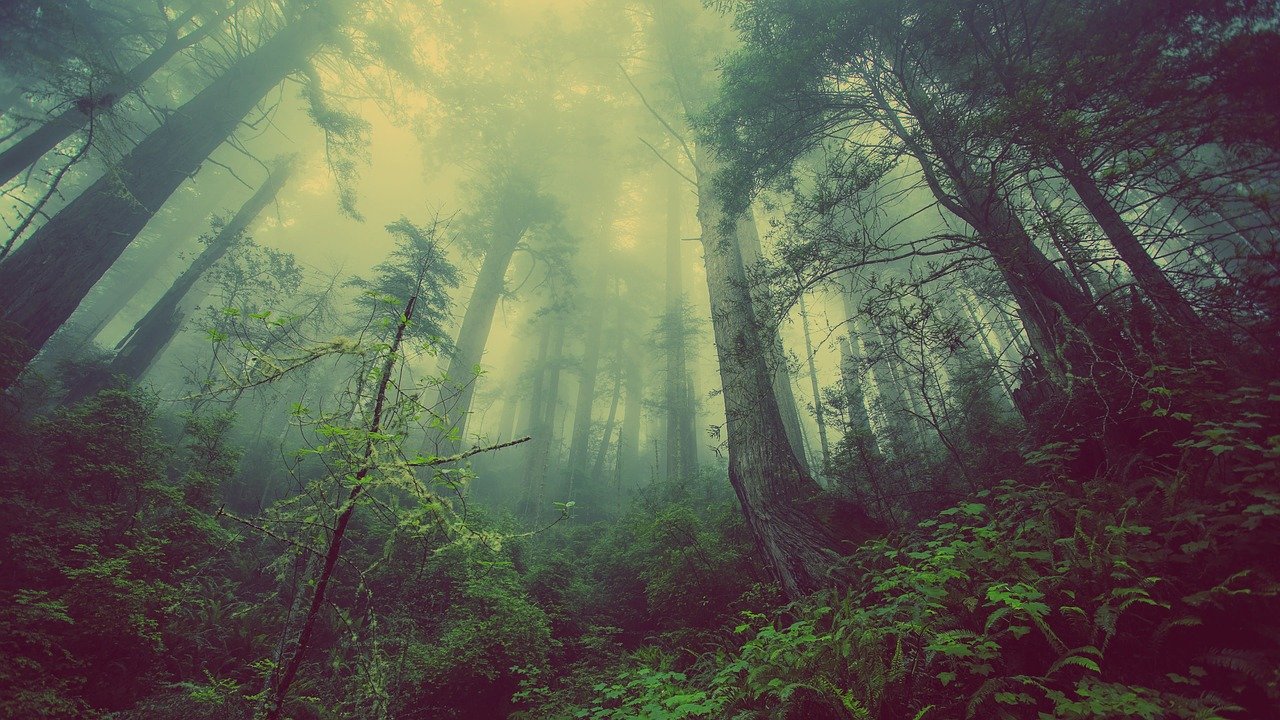Pressemitteilung der Boston University aus dem Januar 2020:
As Our Planet Gets Greener, Plants Are Slowing Global Warming
But an international team of researchers, including Ranga Myneni and Chi Chen from BU, say that finding reveals a daunting outlook for our changing climate
Chi Chen, a Boston University graduate researcher, and Ranga Myneni, a BU College of Arts & Sciences professor of earth and environment, are authors on a new paper that reveals how humans are helping to increase the Earth’s plant and tree cover, which absorbs carbon from the atmosphere and cools our planet. The boom of vegetation, fueled by greenhouse gas emissions, could be skewing our perception of how fast we’re warming the planet. Taking a closer look at 250 scientific studies, land-monitoring satellite data, climate and environmental models, and field observations, a team of Boston University researchers and international collaborators have illuminated several causes and consequences of a global increase in vegetation growth, an effect called greening.
In a new study, published in Nature Reviews Earth & Environment, the researchers report that climate-altering carbon emissions and intensive land use have inadvertently greened half of the Earth’s vegetated lands. And while that sounds like it may be a good thing, this phenomenal rate of greening, together with global warming, sea-level rise, and sea-ice decline, represents highly credible evidence that human industry and activity is dramatically impacting the Earth’s climate, say the study’s first authors, Shilong Piao and Xuhui Wang of Peking University. Green leaves convert sunlight to sugars while replacing carbon dioxide in the air with water vapor, which cools the Earth’s surface. The reasons for greening vary around the world, but often involve intensive use of land for farming, large-scale planting of trees, a warmer and wetter climate in northern regions, natural reforestation of abandoned lands, and recovery from past disturbances.
And the chief cause of global greening we’re experiencing? It seems to be that rising carbon dioxide emissions are providing more and more fertilizer for plants, the researchers say. As a result, the boom of global greening since the early 1980s may have slowed the rate of global warming, the researchers say, possibly by as much as 0.2 to 0.25 degrees Celsius. “It is ironic that the very same carbon emissions responsible for harmful changes to climate are also fertilizing plant growth, which in turn is somewhat moderating global warming,” says study coauthor Dr. Jarle Bjerke of the Norwegian Institute for Nature Research.
Boston University researchers previously discovered that, based on near-daily NASA and NOAA satellite imaging observations since the early 1980s, vast expanses of the Earth’s vegetated lands from the Arctic to the temperate latitudes have gotten markedly more green. “Notably, the NASA [satellite data] observed pronounced greening during the 21st century in the world’s most populous and still-developing countries, China and India,” says Ranga Myneni, the new study’s senior author. Even regions far, far removed from human reach have not escaped the global warming and greening trends. “Svalbard in the high-arctic, for example, has seen a 30 percent increase in greenness [in addition to] an increase in [summer temperatures] from 2.9 to 4.7 degrees Celcius between 1986 and 2015,” says study coauthor Rama Nemani of NASA’s Ames Research Center.
Over the last 40 years, carbon emissions from fossil fuel use and tropical deforestation have added 160 parts per million (ppm), a unit of measure for air pollutants, of CO2 to Earth’s atmosphere. About 40 ppm of that has diffused passively into the oceans and another 50 ppm has been actively taken up by plants, the researchers say. But 70 ppm remains in the atmosphere, and together with other greenhouse gases, is responsible the land warming patterns that have been observed since the 1980s. “Plants are actively defending against the dangers of carbon pollution by not only sequestering carbon on land but also by wetting the atmosphere through transpiration of ground water and evaporation of precipitation intercepted by their bodies,” says study coauthor Philippe Ciais, of the Laboratory of Climate and Environmental Sciences, Gif-sur-Yvette, France. “Stopping deforestation and sustainable, ecologically sensible afforestation could be one of the simplest and cost-effective, though not sufficient, defenses against climate change,” he adds.
It is not easy to accurately estimate the cooling benefit from global greening because of the complex interconnected nature of the climate system, the researchers say. “This unintended benefit of global greening, and its potential transitory nature, suggests how much more daunting, and urgent, is the stated goal of keeping global warming to below 1.5 to 2 degrees Celsius, especially given the trajectory of carbon emissions and history of inaction during the past decades,” says study coauthor Hans Tømmervik of the Norwegian Institute for Nature Research, Norway.
Die Forscher fanden etwas überaus Positives: Anthropogenes CO2 wird verstärkt von den Pflanzen aufgenommen, was die Klimaerwärmung bremst. Es ist schon bemerkenswert, dass Boston University krampfhaft versucht, hier etwas Negatives zu finden. Die Forscher zeigen sich angeblich schockiert über ihren Fund, dass der Mensch die Erde ergrünen lässt. Politisch korrekt wird daher schnell noch die eine oder andere Gebetsformel zum Pariser Klimavertrage eingebaut, ansonsten hätte es sich sicher Ärger aus der Alarmfraktion gegeben: How dare you! Der Klimawandel ist „daunting“ und „urgent“. Darüber sehen wir großzügig hinweg und beglückwünschen die Forscher zu dieser wichtigen Studie.
Hier der Abstract der dazugehörigen Studie von Piao et al. 2020:
Characteristics, drivers and feedbacks of global greening
Vegetation greenness has been increasing globally since at least 1981, when satellite technology enabled large-scale vegetation monitoring. The greening phenomenon, together with warming, sea-level rise and sea-ice decline, represents highly credible evidence of anthropogenic climate change. In this Review, we examine the detection of the greening signal, its causes and its consequences. Greening is pronounced over intensively farmed or afforested areas, such as in China and India, reflecting human activities. However, strong greening also occurs in biomes with low human footprint, such as the Arctic, where global change drivers play a dominant role. Vegetation models suggest that CO2 fertilization is the main driver of greening on the global scale, with other factors being notable at the regional scale. Modelling indicates that greening could mitigate global warming by increasing the carbon sink on land and altering biogeophysical processes, mainly evaporative cooling. Coupling high temporal and fine spatial resolution remote-sensing observations with ground measurements, increasing sampling in the tropics and Arctic, and modelling Earth systems in more detail will further our insights into the greening of Earth.
+++
Der bekannte Bestseller-Autor Peter Wohlleben (Das geheime Leben der Bäume) hat auch einen Podcast. In einer aktuellen Folge unterhält er sich mit Jörg Kachelmann über Holz als die neue Braunkohle. Herausgekommen sind 49 interessante Minuten. Zum Podcast geht es hier.
+++
Wenn es nach Al Gore gegangen wäre, dann wären sie längst verschwunden in der Natur: Eisbären. Prognosen mit einer kurzen Laufzeit haben immer die Gefahr, dass die Realität diese schnell einholt. Offenbar haben Forscher daraus gelernt und das Ende der Spezies Eisbär nun vorsichtshalber auf das Jahr 2100 gelegt. Ein Datum, an dem heute Geborene es möglicherweise noch nachprüfen könnten, alle andere nicht. Von daher sind die Forscher jetzt auf der sicheren Seite. Der Spiegel berichtet.
+++
Die Blödeltruppe Insterburg und Co hatte schon vor 50 Jahren allerhand absurde Reime auf Lager. Einer lautete: Sibirien, Sibirien du wunderbarer Ort, bist prima für Ferien und Wintersport. Zu Wintersport reicht es (noch) nicht. Chatanga, einer der Orte mit sehr hohen Juni- Temperaturen aber meldet sehr moderate Werte momentan, wenn man bedenkt, dass auch in Sibirien Hochsommer herrscht und der fällt nicht zusammen mit Null Grad, auch wenn einige das so denken. Immerhin aber nähern sich die Nachttemperaturen gelegentlich der Nullgrad Grenze.

+++
„Wir steuern auf eine Katastrophe zu“. Das twittert ZDF Wettermann Özden Terli und bezieht sich auf einen Artikel im Focus.

Dieser Focus Artikel macht spektakulär auf, ein Thermometer mit ca. 44 Grad Celsius Temperatur vor einer Stadt-Silhouette. Wenn man den Artikel liest, der von einem bekannten Gesicht der Alarmszene kommt (Michael Odenwald) wird es spannend. In der Überschrift heißt es, wir überschreiten die berühmte 1,5-Grad-Schwelle bereits in den nächsten 5 Jahren. Es ist also eine Feststellung, die vermutlich auf irgendetwas beruht. Danach kommt aber bereits die erste Abschwächung:
„Die Wahrscheinlichkeit, dass die Erdtemperatur in mindestens einem der Jahre von 2020 bis 2024 den 1,5-Grad-Wert erreicht, ist hoch.“
Wir lernen aus der Feststellung wird eine Wahrscheinlichkeit. Und später wird aus der hohen Wahrscheinlichkeit ein 20% Wert. Das also versteht Michael Odenwald unter hoher Wahrscheinlichkeit.
„Genauer gesagt verlautbart die WMO, dass die Erdtemperatur mit einer Wahrscheinlichkeit von 20 Prozent in mindestens einem der Jahre von 2020 bis 2024 den 1,5-Grad-Wert erreicht.“
Offenbar fiel sogar Professor Stefan Rahmstorf da etwas auf und er twitterte:

Größtenteils richtig meint, teilweise falsch. Auf die Diskrepanz von Feststellung und Wahrscheinlichkeit geht er allerdings nicht ein. Was Odenwald in dem Artikel gemacht hat, geht schon sehr stark in die Richtung der Kritik, die Axel Bojanowski erst kürzlich in der WELT beschrieben hat. Zwar taucht die Unsicherheit (immerhin 4:1, dass es nicht so kommt) auf, aber aus einer Wahrscheinlichkeit wird eine Tatsache. Das sollte einen Journalisten eigentlich auffallen, einem Diplom Meteorologen sogar ganz besonders. Aber, was soll man von einem Nachrichtenmagazin erwarten, dass sich schon sehr früh (24.04.2020) ganz sicher war, dass wir 2020 einen Hitzesommer bekommen, der alles übertrifft?
